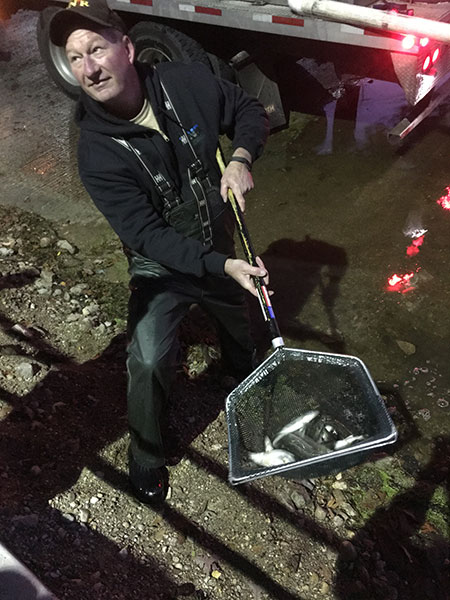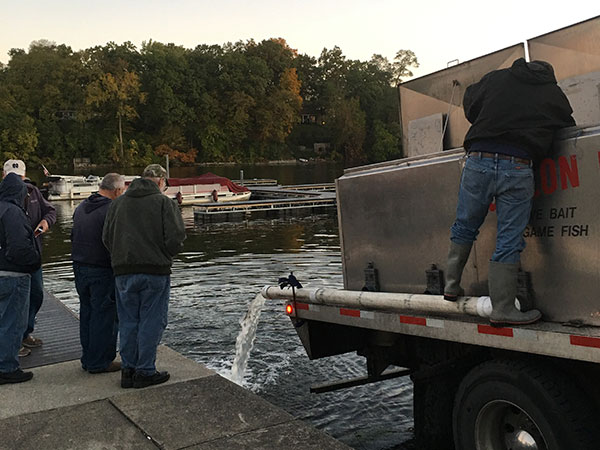By Louie Stout
 More Walleye Stocked in Indiana St. Joe
More Walleye Stocked in Indiana St. Joe
St. Joseph River walleye fishing got another shot in the arm last week with a strong stocking of hatchery fish.
Walleyes are planted in the Indiana section of the St. Joe every other year. Michigan plants them on upstream and downstream sections in alternate years.
Last week’s stocking consisted of 9,260 by the Indiana DNR at Maggies Landing in Mishawaka and another 2,000 compliments of the Michiana Walleye Association at Midway Bait and Tackle boat ramp in Osceola. The DNR stocking was about 1,000 more fish than it stocked in 2015. The club stocking remained the same as 2015.
All of the fish were purchased from the Gollon Fish Hatchery in Wisconsin which has provided the river walleye stockings for the past few years.
The recently stocked fish averaged 7 inches long with some larger.
“They really looked good and healthy,” said MWA board member Rick Nichols who assisted in the stocking. “And from what I could tell, we didn’t lose many in the process.”
The DNR purchased the fish with annual remediation money it receives from AEP for the hydro dams. The walleye club’s contribution comes from individual contributions and the “stocking jars” placed in area businesses for individuals to donate.
 More Walleye Stocked in Indiana St. Joe
More Walleye Stocked in Indiana St. Joe
River fishing was pretty good for walleyes this summer although most of the fish were beneath the legal limit. Most walleye experts are optimistic that next year will be a better season for legal fish.
And they are out there. Indiana DNR St. Joe River biologist Larry Koza conducted a quick survey of river walleyes recently and turned up some nice fish.
His crew shocked for two hours between Baugo Creek downstream to the island across from Maggies Landing. They collected 39 walleyes with 9 of legal size and 7 that measured longer than 18 inches.
“The largest we turned was a 20.7 incher,” he said. “We were very pleased to see the number of nice fish we saw but it’s hard to draw any conclusions from that. We wanted to see how the fishery was doing and we did notice the fish we captured were very healthy.”
The electrodes that the DNR drags through the water off the front of its boat only stuns fish long enough for crew members to net them. The fish are measured, scale samples taken and the fish are released.
While the number turned up seems small, keep in mind that the electrodes are only effective down to about 5 feet of water depth. They began shocking at dark when the fish are more readily available in shallower water.
Koza said what was interesting was that most of the larger fish were captured in the shallower water of Baugo Bay. They also picked up a few in the channel west of Bittersweet and around the island near Maggies Landing.
“It’s pretty apparent the walleyes go shallow to feed at night,” said Koza. “We find them in channels and shallows in about all of the lakes we shock after dark. I don’t think most anglers realize that.”
Oddly enough, he didn’t encounter many bass during the shocking effort but did see a lot of shad, the latter of which was no surprise.
Of the sub-legal fish, six were 15 inches, 10 were 14 inches (probably part of the 2015 stocking) and the smallest was 11.3 inches (probably a fish stocked last year by Michigan near Mottville).
Some of the fish stocked last week will filter downstream into lower pools the same way Michigan’s upper St. Joe fish find their way into Indiana waters.
The DNR will return next fall to survey and evaluate the success of this fall’s stocking.


